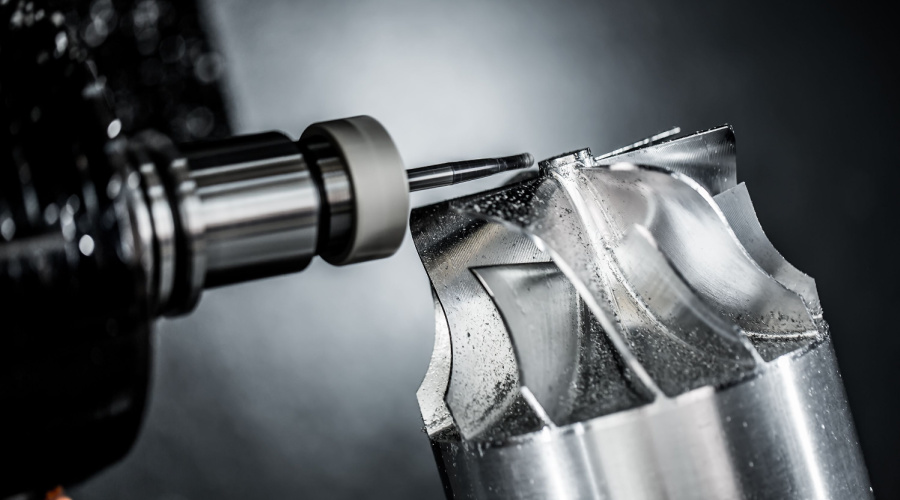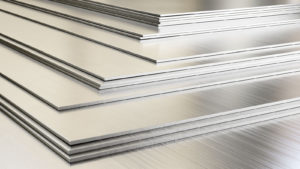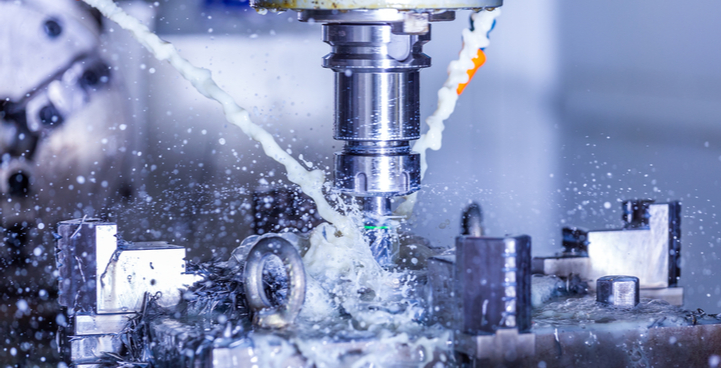Machining is a manufacturing process that involves removing materials from a workpiece via cutting tools in order to convert it into a shape you desire. Machine tools have slowly evolved over the past few decades. While many still retain the same basic characteristics of their 19th- and early 20th-century ancestor, we now use computerized numerical control or CNC machines which have the capacity to efficiently and precisely repeat complex sequences for production of composite parts of varying sizes and shapes for a wide range of machining projects.
There are hundreds of varieties of machine tools that range in size from small, simple machines mounted on workbenches to huge, complex production machines weighing several hundred tons. Below is a list of various types of machine tools commonly used in the industry. Contact our team at 573-646-3996 if you have any questions about CNC machining!
1. Turning
A turning machine, or lathe, removes material by rotating the workpiece at a high RPM while a stationary single-point cutting tool shaves into it to create the desired, which is typically round, tubular, or cylindrical in shape. It is usually considered the father of all other machine tools because it dates back all the way to the Egyptians and many of its fundamental mechanical elements are incorporated into the design of most other machine tools. You can perform various operations on a lathe such as boring, knurling, drilling, facing, growing, sanding, deformation, and threading.
2. Milling
A milling machine removes material from a workpiece by securing it to a fixture and feeding it to a multi-point cutting tool called a milling cutter. While this cutter moves around at a high speed, it strips away material from a workpiece’s flat surfaces, grooves, shoulders, inclined surfaces, dovetails, and T-slots. Milling is one of the fundamental operations in machining, though it is less accurate than the turning processes because of the high degree of freedom. Common types can include horizontal, vertical, knee-and-column, bed-type, and more.
3. Grinding
Grinding machines remove material by putting the workpiece in contact with a rotating abrasive wheel called an abrasive belt or grinding wheel which then grinds the unwanted material away. This process is one of the most accurate of all machine types with parts being grinded down to tolerances of plus or minus 0.0001 inch (0.0025 millimetre). Furthermore, it can be used to produce parts of identical shapes and sizes as well as improve the final finish of the surface. Common types can include cylindrical, centreless, off-hand, and more.
4. Broaching
A broaching machine removes material by using a toothed cutting tool called a broach. As the broach moves against the workpiece, each tooth takes a shallow cut along the entire length, carrying the chip to the end of the part.
In many cases, a single pass of the broach completes the machining of the surface while some cases require multiple passes with multiple broaches. This depends on the geometry of the part, the rise per tooth, and the amount of stock to be removed at every pass. Linear and rotary are the two types of broaching services that are used to produce different kinds of machining finishes.
5. Shaper
A shaper machine removes material by using a linear or straight motion between a workpiece and an oscillating single-point cutting tool that cuts a linear toolpath; the workpiece automatically feeds toward the tool during each return stroke. The largest shapers have a 36-inch cutting stroke and can machine parts up to 36 inches long.
6. Planer
A planer machine works the same as a shaper in that it uses a straight or linear movement between the single-point cut tool and workpiece to machine a straight tool path and remove material. The difference is that it can machine much longer workpieces, even up to 50 feet long. It remains stationary during the cutting stroke and automatically feeds into the workpiece after each cutting stroke.
7. Drilling
A drilling machine removes material by using a twist drill with a pointed end to cut holes in the metal. Other common tools to machine holes also include reaming, boring, counterboring, countersinking, and tapping internal threads with the use of a tapping attachment.
Best Machine Shop Missouri | Roberson Machine Shop
If you are looking for any of these tools for whatever purpose, you can find them in our expansive machine shop. Roberson Machine Company has been a contract manufacturer and industry leader for more than two decades.
We have delivered fast, turnkey machined parts that help overcome a variety of challenges for many different industries. Call our team at 573-646-3996 or request a quote today for more information on our CNC machine services.





